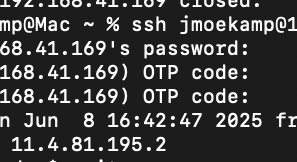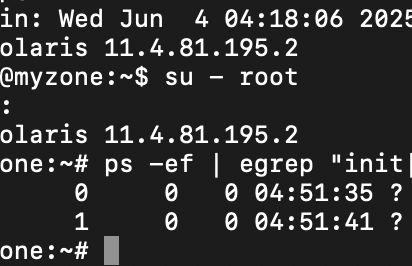This is a nifty small feature . Tools like ps,df,du, ls,ps,size,prstat and swap have now the option --scale. This makes the output of those tools much more readable.
Let’s assume we have a directory with three files of varying size:
root@solaris:~# ls -l
total 1991695
-rw------- 1 root root 536440912 März 1 19:26 narf
-rw------- 1 root root 1048576 März 1 19:10 testfile
-rw------- 1 root root 536870912 März 1 19:14 testfile2This is a little cumbersome to read despite the experienced admin will recognize at least two numbers. The --scale command allows me to control how the output is scaled in a more human readable format.
Let’s at first use a scaling factor of 1024. Values are scaled by dividing by 1024. how often is controlled by the min i have put in front of the 1024. I will later explain the impact off this value.
root@solaris:~# ls -l --scale=min,1024
total 2215977
-rw------- 1 root root 569M März 1 19:31 narf
-rw------- 1 root root 1024K März 1 19:10 testfile
-rw------- 1 root root 512M März 1 19:14 testfile2Of course you could scale with a factor of 1000 as well.
root@solaris:~# ls -l --scale=min,1000
total 2215977
-rw------- 1 root root 596M März 1 19:31 narf
-rw------- 1 root root 1048K März 1 19:10 testfile
-rw------- 1 root root 537M März 1 19:14 testfile2If you chose binary scaling, the Unit will be appended with an “i” to make clear that we are talking about Mebibyte oder Kibibyte.
root@solaris:~# ls -l --scale=min,binary
total 2215977
-rw------- 1 root root 569Mi März 1 19:31 narf
-rw------- 1 root root 1024Ki März 1 19:10 testfile
-rw------- 1 root root 512Mi März 1 19:14 testfile2The unit to which the the numbers are scaled by dividing with the scale factor is set with min, max or minwide.
Min will scale each value to the minimal unit that allows the system to display a value in 5 digits.
root@solaris:~# ls -l --scale=min
total 2215977
-rw------- 1 root root 569M März 1 19:31 narf
-rw------- 1 root root 1024K März 1 19:10 testfile
-rw------- 1 root root 512M März 1 19:14 testfile2max uses the highest unit that allows the to have a nonzero value in front of a possible decimal. It tries to make the number in front of the unit as low as possible and tries to fit in 5 digits.
root@solaris:~# ls -l --scale=max
total 2215977
-rw------- 1 root root 569M März 1 19:31 narf
-rw------- 1 root root 1M März 1 19:10 testfile
-rw------- 1 root root 512M März 1 19:14 testfile2minwide is similar to min,except that it tries to fit the the size output in eight instead of five columns
root@solaris:~# ls -l --scale=minwide
total 2215977
-rw------- 1 root root 582461K März 1 19:31 narf
-rw------- 1 root root 1048576 März 1 19:10 testfile
-rw------- 1 root root 524288K März 1 19:14 testfile2This is a nice demonstration of minimal scaling, as the size of testfile fits in eight columns without scaling the value isn’t scaled at all.
You can use --scale as well with prstat
root@solaris:~# prstat --scale=max,binary
PID USERNAME SIZE RSS STATE PRI NICE TIME CPU PROCESS/NLWP
963 root 181Mi 160Mi sleep 59 0 0:00:30 0,241% sstored/25
6 root 0Ki 0Ki sleep 99 -20 0:00:06 0,122% zpool-rpool/166
1480 root 13Mi 6Mi cpu0 59 0 0:00:00 0,024% prstat/1du is one additional tool that supports this option:
root@solaris:~# du --scale=max
3G .
root@solaris:~# du --scale=min
2782M .
root@solaris:~# du --scale=minwide
2849154K .
root@solaris:~# du --scale=min,1024
2782M .
root@solaris:~# du --scale=min,1000
2917M .

